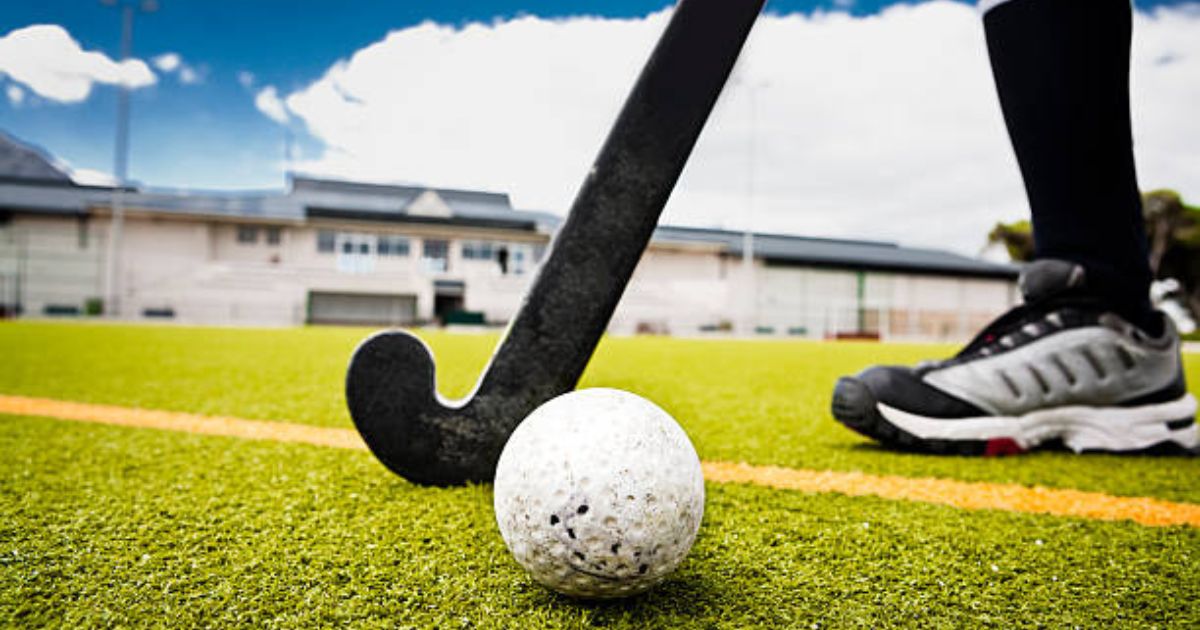The symphony of sticks clacking, the rhythmic thud of the ball, and the intense energy of the players – these are the hallmarks of a hockey match. But there’s one element that often goes unnoticed but plays a crucial role in the game: the wet field. Why is it always wet, and how does it affect the game? Let’s delve into the science and the strategy behind the damp pitch.
Table of Contents
ToggleThe Reason Behind the Hockey Field Wet
- Dew Formation: One of the most common reasons for a wet hockey field is dew. As the temperature drops during the night, the moisture in the air condenses on the cooler grass, forming droplets. This natural phenomenon often leaves the field damp in the morning, particularly in regions with high humidity.
- Irrigation Systems: Many hockey fields, especially those in arid or semi-arid regions, rely on irrigation systems to maintain the grass health. Regular watering ensures the turf remains green and playable, but it also means the field can be wet, especially after heavy watering or rain.
- Weather Conditions: Rain is, of course, the most obvious cause of a wet hockey field. Depending on the intensity and duration of the rainfall, the field can become saturated, impacting the game’s dynamics.
- Soil Composition: The type of soil on the hockey field can influence its drainage. Clayey soil tends to retain water, leading to a wetter field, while sandy soil allows better drainage.
The Impact of a Hockey Field Wet on the Game
A wet hockey field can significantly alter the dynamics of a hockey match.
- Ball Speed and Bounce: The most noticeable impact is on the ball’s behavior. A wet ball tends to travel slower and bounce less predictably. This can disrupt the flow of the game, as players may find it challenging to anticipate the ball’s trajectory.
- Player Movement: Wet conditions can affect player movement. The turf becomes slippery, making it difficult to change direction quickly or maintain balance. This can lead to more turnovers and errors.
- Stick Handling: Controlling the stick on a wet field is a challenge. The ball can stick to the stick, making it harder to pass and dribble accurately. Players need to adjust their grip and technique to compensate for the increased friction.
- Physicality: While the wet field can slow down the game in some aspects, it can also increase physicality. Players may find it harder to maintain their footing, leading to more collisions and tackles.
- Strategy: Teams need to adapt their strategies to suit wet conditions. Short, sharp passes and controlled play often become more effective than long, aerial balls. Possession becomes even more crucial, as turnovers can be costly.
Click to read about Taneja Hubreli (Swiss-beach vollyball player)
Hockey Field Maintenance and Preparation
To mitigate the impact of wet conditions, ground staff play a vital role.
- Drainage: Ensuring proper drainage is essential. Regular maintenance of the drainage system can help prevent waterlogging.
- Mowing: Cutting the grass to the correct height can improve drainage and reduce the amount of water retained on the field.
- Top Dressing: Applying a top dressing can help improve soil structure and drainage.
- Covering: In anticipation of heavy rain, ground staff may use covers to protect the field.

Player Adaptations and Equipment
Players also need to adjust their approach to play in wet conditions.
- Footwear: Cleats with a suitable stud pattern can provide a better grip on a wet field.
- Stick Choice: Some players may opt for a stick with a slightly thicker handle to improve grip.
- Technique: Players need to adapt their stick handling and passing techniques to suit the conditions.
- Mental Preparation: Staying focused and adapting quickly to the changing conditions is crucial for success.
The Role of Technology
Technology is also making a difference in managing wet fields.
- Weather Forecasting: Accurate weather forecasts can help ground staff prepare for wet conditions.
- Field Sensors: Sensors can monitor soil moisture levels and provide real-time data to help with irrigation and drainage management.
While a wet hockey field can present challenges, it also adds an element of unpredictability to the game, making it even more exciting for spectators. By understanding the science behind the wet field and the strategies for dealing with it, players and ground staff can work together to create optimal playing conditions.

Why is a hockey field wet?
Hockey fields are often wet to create a faster, more predictable playing surface. Discover why watering is essential for the game, how it impacts players, and the science behind this unique field condition.
Do they wet the field for field hockey?
Yes, hockey fields are often intentionally wetted. This practice creates a faster, more consistent playing surface, allowing the ball to move quicker and more predictably. Additionally, wet turf reduces friction, decreasing the risk of player injuries. The smoother surface also improves ball control, enhancing the overall gameplay experience.
Is there water on a hockey pitch?
Yes, there is often water on a hockey pitch. It might seem unusual, but the pitch is intentionally watered to create a faster, smoother playing surface. This helps the ball move quicker and more consistently, making for a more exciting game.
Why are hockey turfs blue?
Hockey turfs are often blue to improve visibility for television viewers. The contrast between the blue turf and the yellow ball makes it easier for spectators watching on TV to clearly see the action.
This trend started with the London 2012 Olympics and has since become quite popular in professional hockey matches. While it’s not mandatory, blue turf has become the standard for many high-profile tournaments.
What is the ball called in field hockey?
A field hockey ball, often simply referred to as a hockey ball, is a hard plastic sphere designed for fast-paced field play.
Is field hockey a high-risk sport?
Field hockey can be considered a moderate-risk sport. While it’s not as physically demanding as contact sports like football or rugby, there is a risk of injuries due to the speed of the game, the hard ball, and the potential for accidental collisions.
Common injuries include stick and ball impacts to the face and hands, as well as ankle and knee sprains. However, with proper protective gear, training, and adherence to rules, the risks can be significantly reduced







